When traveling with children, snacks are an absolute necessity, and nothing beats fresh fruits as an energy booster during long flights!
So you’re probably wondering, “Can you bring fruit on a plane?” and the answer is: Yes, you can bring fruit on a plane as a snack; however, there are a few important considerations.
Learn the TSA’s rules before you pack your fruits in your checked bag or handbag. These rules can help you go through airport security without any problems.
Table of Contents
Key points
- The Transportation Security Administration (TSA) has a rule called 3-1-1 that applies to liquids and gels. It states that you can bring liquids or gel in your carry-on luggage with a maximum size of 3.4 ounces.
- There are a few exceptions to this rule, including baby food, formula, breast milk, and medicines. If you bring any of those items, you need to declare them.
- Fruit can be brought on board most flights. However, you should check the rules of your destination first.
- Wash and dry fruits before packing them for travel. Pack them in resealable containers. Apples, oranges, and bananas are all excellent options.
- Bring sandwiches and snacks like chips, nuts, protein bars, or energy bars.
- If you want to take water on the plane, buy it after going through airport security, or bring an empty water bottle and fill it up once you pass security.
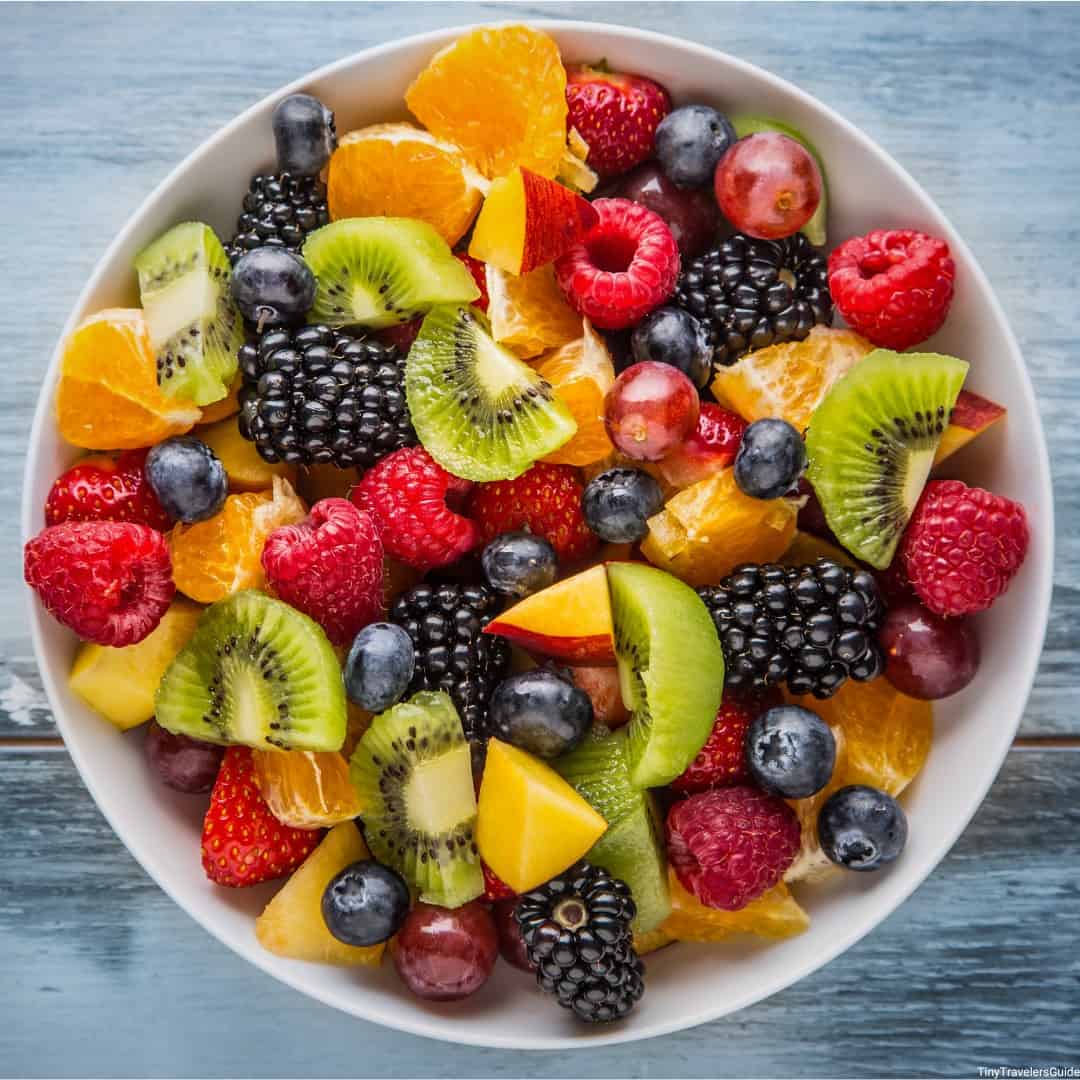
TSA 3-1-1 Rule Explained
When packing liquids and gels in your carry-on baggage, follow the TSA’s 3-1-1 rule.
The TSA 3-1-1 rule is straightforward. It refers to the limit for liquids, gels, and aerosols in your carry-on bag.
The ‘3’ represents 3.4 ounces, or 100 milliliters; this is the maximum size each container of liquid, gel, or aerosol can be.
The first ‘1’ stands for one quart-sized bag. This is the clear, sealable bag you’re allowed to put your containers in.
The last ‘1’ means that each passenger is only allowed to bring one of these quart-sized bags.
What does it have to do with fruits? According to the TSA, solids like fruits can be checked through without issue.
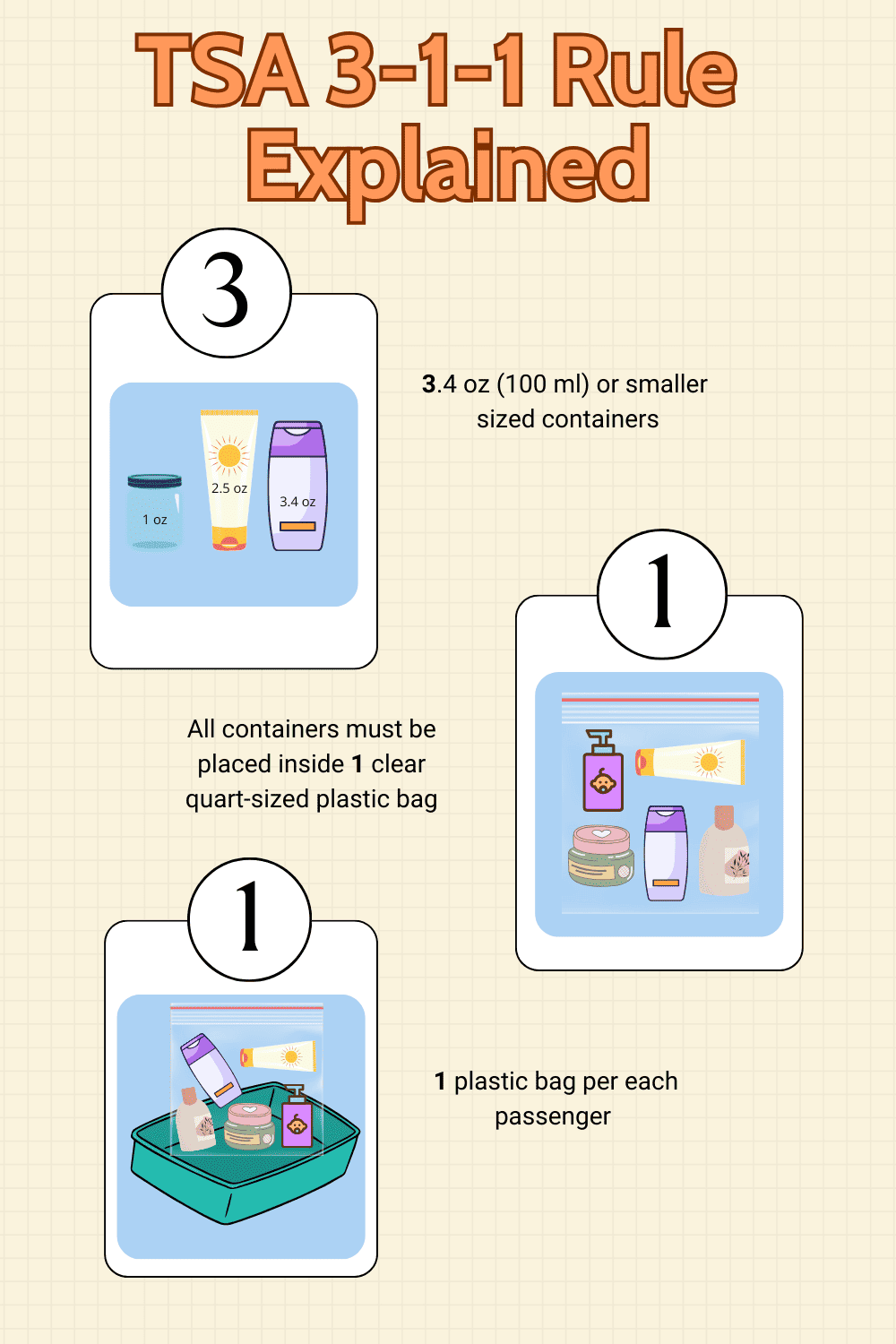
The 3-1-1 Rule: When does it apply?
This rule is applicable to all liquids or gels such as lotions, shampoos, etc.
If you are traveling with a fruit juice bottle that is larger than 3.4 ounces, then it will need to be placed on your checked baggage.
If you are carrying a fruit like an apple, banana or orange, then it is allowed to stay on your carry-on.
TSA rule 3-1-1 includes more than drinks when it comes to “liquids.” This includes liquids that are able to change their shape in order to fit into a container.
Gels, aerosols, and creams are all liquids. Liquids also include yogurt, applesauce, and jelly, which can take the shape of a container.
The 3-1-1 Rule also applies to items such as toothpaste, shampoos, lotions, and liquid soap.
There are some exceptions to this rule. Some examples are baby formula, food pouches, breast milk, and medicines. If you have any of these, you need to tell the TSA agent at the beginning of the screening process. They could ask you to do additional checks. You can read more on the TSA official website.
Write your name on your belongings so that security checks don’t get mixed up.
As a traveler, you should be aware of the TSA regulations when it comes to the transport of food and liquids. These rules apply to domestic and international flights.
Can you bring fruit on a plane?
Yes, you can take fruits with you on an airplane. It’s possible to bring fruits on an airplane, as long as you comply to TSA rules. Sometimes you need to go through extra screenings and make sure to pack these items properly.
You should be aware of the agricultural restrictions that may apply to fruit when traveling overseas.
You can bring your fruit with you on the flight, but it is best to eat it before arriving in a foreign country.
Check with the airline you are flying and your local customs office to find out if there are any specific fruit rules.
It is better to bring fruits with you that are easier to manage and less messy. These are the fruits that I bring with me for my children:
- Apples don’t require refrigerating and are tough enough to handle being packed in a bag.
- Bananas make a convenient snack on the go. They are easy to peel and delicious. They can get crushed in your bag if you don’t handle them with care.
- Oranges have their own natural packaging, which makes them great for travel. In addition, oranges provide both hydration as well as a refreshing taste.
- Grapes are small and easy to eat. They don’t require refrigeration, so they’re a great choice for air travel. Always wash the grapes before packing them and use a recyclable container.
- Berries: Strawberries, blueberries, raspberries, or blackberries are all good choices. These are a great snack, full of vitamins and antioxidants. As with grapes, they need to be rinsed and then packed into a container.
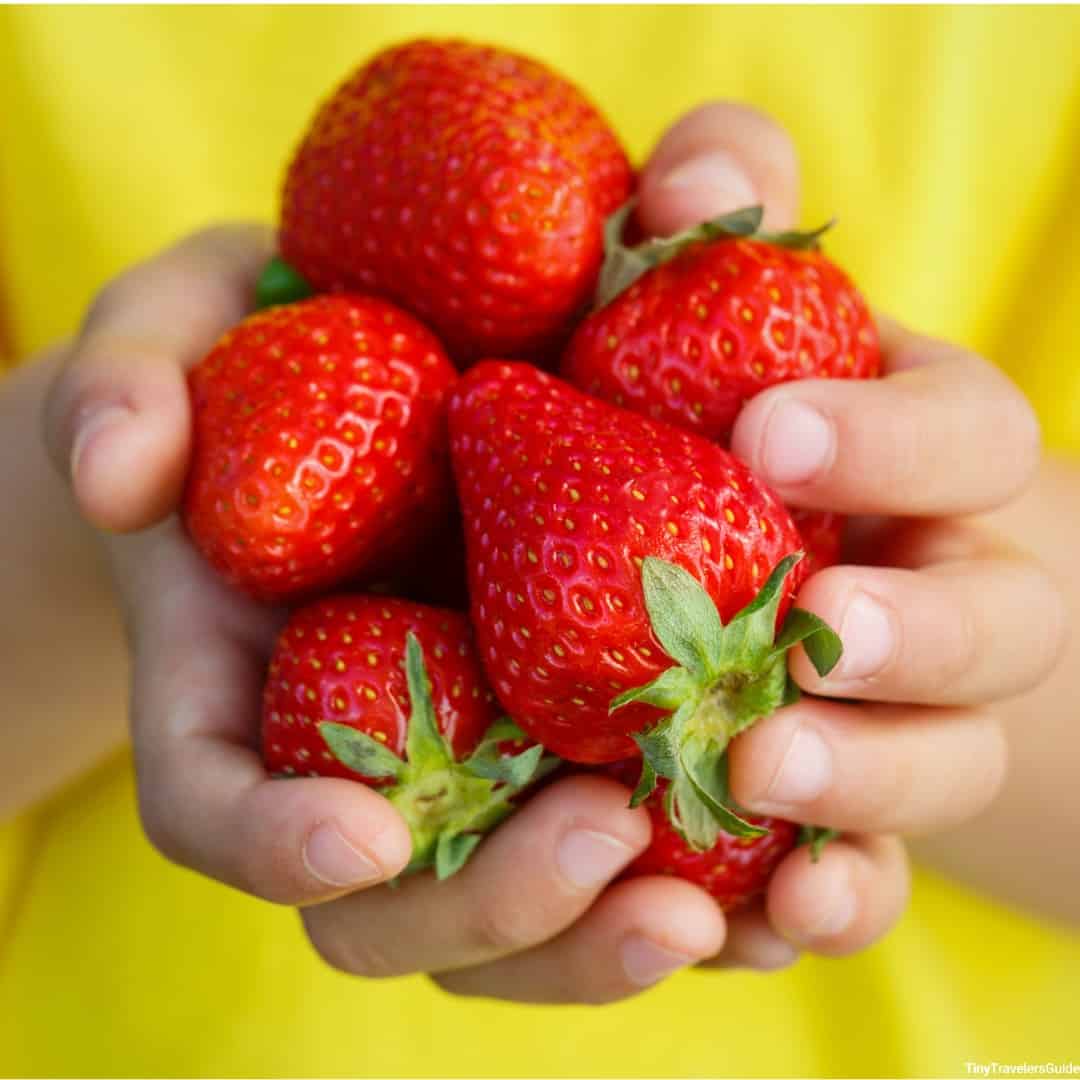
There are additional rules if you travel from Hawaii, Puerto Rico, or the U.S. Virgin Islands into the U.S. continental. The USDA provides guidelines to prevent harmful organisms from spreading on the U.S. mainland. The organisms can come from fruits with pests or diseases.
In general, it is best to consume all the fruits you have brought with you to prevent problems with customs.
Different laws and regulations apply in different countries.
Australia, for example, has strict rules that protect its unique environment from pests and diseases. Customs must be informed of any animal, plant, or food products that travelers may have. This includes all fresh fruits.
You must declare any fruit that you may have that you didn’t eat by the time you reach your destination.
To be on the safe side, purchase fruits at your destination or select fruits such as apples, bananas, and oranges.
Fruits for Travel: Tips to prepare your fruits for traveling
If you bring fruits for your trip, you want them to remain fresh and tasty.
One easy option is to go for fruit cups, which come in individual servings and are perfect for snacking on the go.
You can also opt to pack solid fruits. Make sure to wash them before packing.
You can follow a few simple steps for an easy and stress-free trip with fruits:
- Select fruits such as bananas, oranges, or apples that will not easily bruise. These fruits come with their own “packaging”, making them ideal for travel.
- Before packing, wash and dry your fruit.
- Use reusable containers to pack your fruits. Packing your fruit in reusable containers will prevent them from being crushed or bruised when they are in your bag. It also keeps any liquid or mess contained if the fruits are broken or cut.
- You can pre-cut fruits. If you plan to bring fruits such as melons and pineapples, cut them into pieces before placing them in the container. This makes it easier to consume and helps reduce waste. You can also prepare a fresh fruit salad.
Other types of foods are also subject to the same rules
Aside from fruits, many other types of food are permitted for air travel. So whether you have a picky eater or your child has dietary restrictions, you can bring whatever food they require.
You can choose to bring sandwiches. They are easy to make at home, or they can be purchased in stores.You can also bring snacks such as cookies, nuts, and chips on an airplane. Energy bars and granola bars are both convenient and nutritious.
It is possible to bring cooked food in solid form (such as hard-boiled eggs). Eggs, for example, are an excellent source of protein that can be enjoyed as a tasty snack or as part of a meal.
If you have any dietary restrictions, then packing your meals yourself can be the perfect solution. When storing food, make sure to use containers that are spill-proof and tightly seal the lids.
The rules for traveling with dried food are much more flexible. Dried fruit, nuts, and snacks can be brought in either your checked or carry-on luggage. They won’t spoil or cause biosecurity issues. These are great for people who want to pack light and easy snacks.
Cheese
The type of cheese you bring on your flight is important. Hard cheeses such as cheddar and gouda can be brought in either your checked or carry-on baggage.
The TSA requires that soft cheeses, such as camembert and brie, or cream cheese, be carried in accordance with the 3-1-1 rule.
These types of cheeses are considered semi-liquid because of their consistency. If you are bringing a lot then it should go in your checked baggage.
Dips & Spreads
I understand that if you’re traveling with a picky eater, adding creamy spreads and dips to your meals can do wonders. So, It’s important to be aware of the TSA regulations that are applicable to these items.
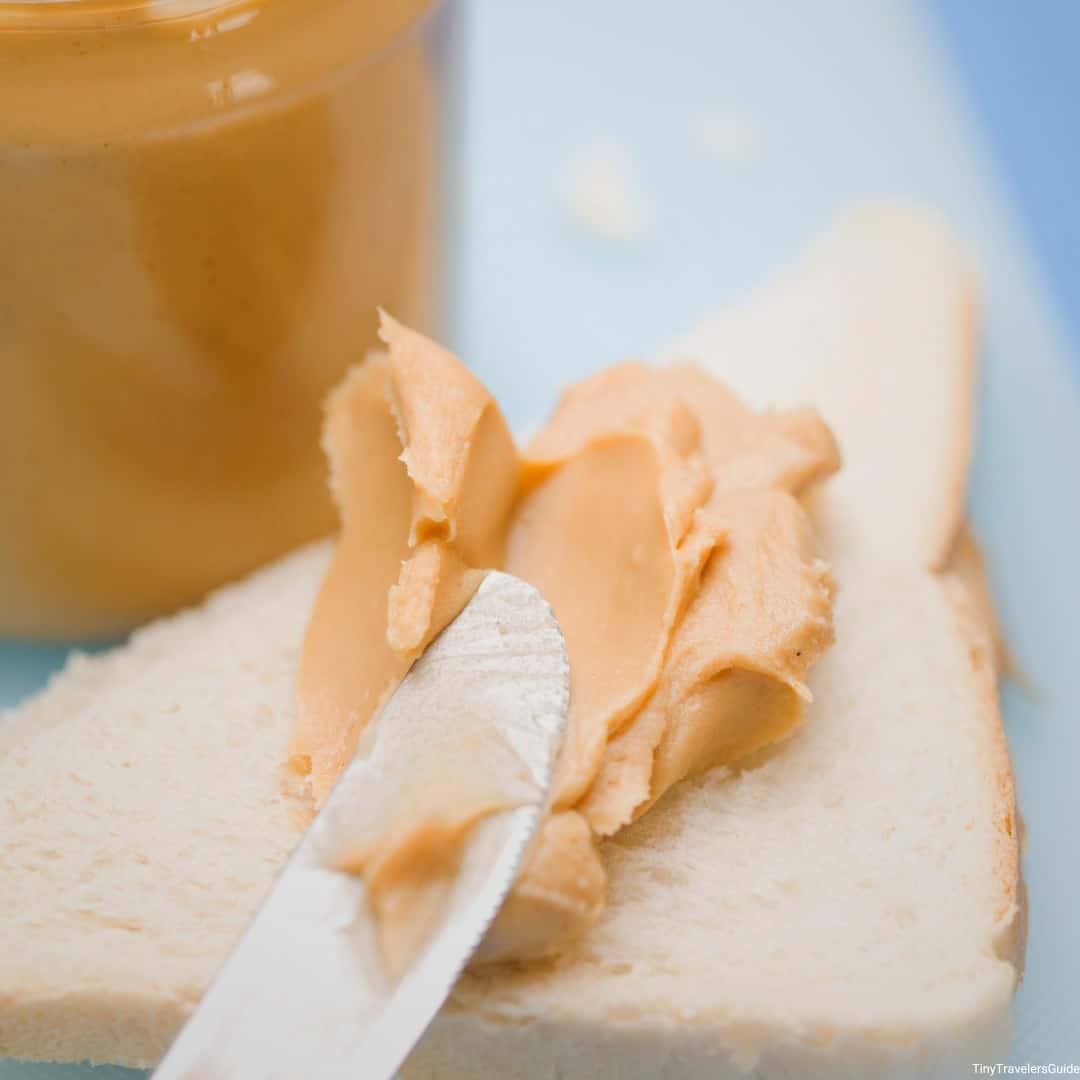
For example, peanut butter is subject to this rule. If you want to bring peanut butter in your carry-on, then it has to be in a container that is a maximum of 3.4 ounces (100.0 milliliters).
All semi-liquids, such as cranberry jam, fruit sauce, applesauce, maple syrup, and salad dressing are subject to the same restriction. These products should be packed in clear zip-top bags that are quart-sized.
If you plan to bring more than the allowed in the 3-1-1 rule, then you have to pack it in your checked luggage. Ensure your containers have a good seal and are not prone to spills.
Make sure the food you’re bringing on board complies with any rules in place at your destination.
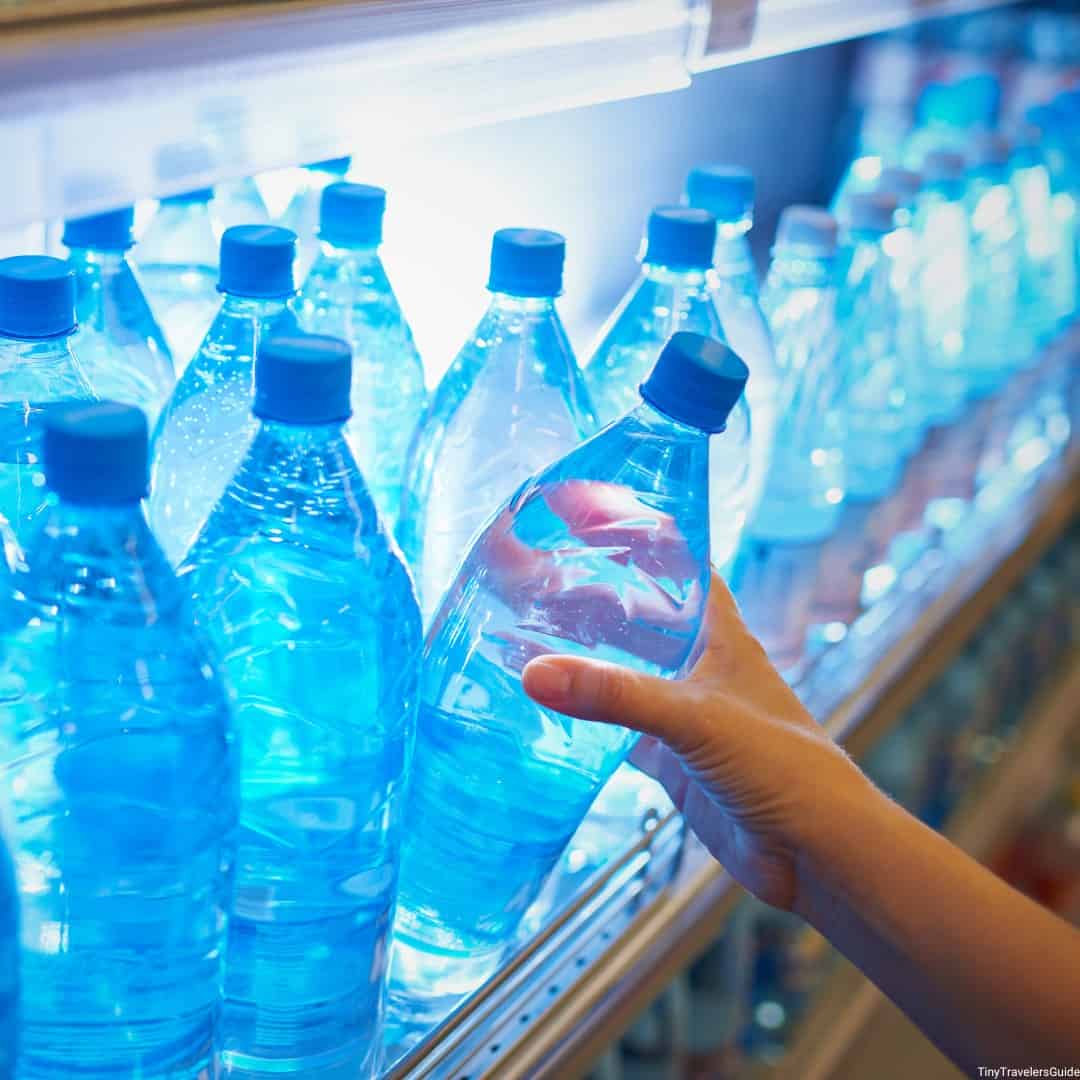
Drinks on a plane
Passengers who want to bring water or any other drink on a flight must comply with TSA regulations.
TSA rule 3-1-1 for carry-on bags also applies. It means that you can’t bring a large water bottle to airport security.
You can opt to bring an empty water bottle instead. After you pass through the security check, you will be able to refill your bottle at the airport drinking fountains.
You can also buy drinks to bring on board after you have gone through the security check.
TSA regulations govern the transportation of food on board a plane. However, there are also other alternatives. After you pass through security, food and beverages can be purchased at airport vendors to take on board. It gives you more choices for food onboard.
